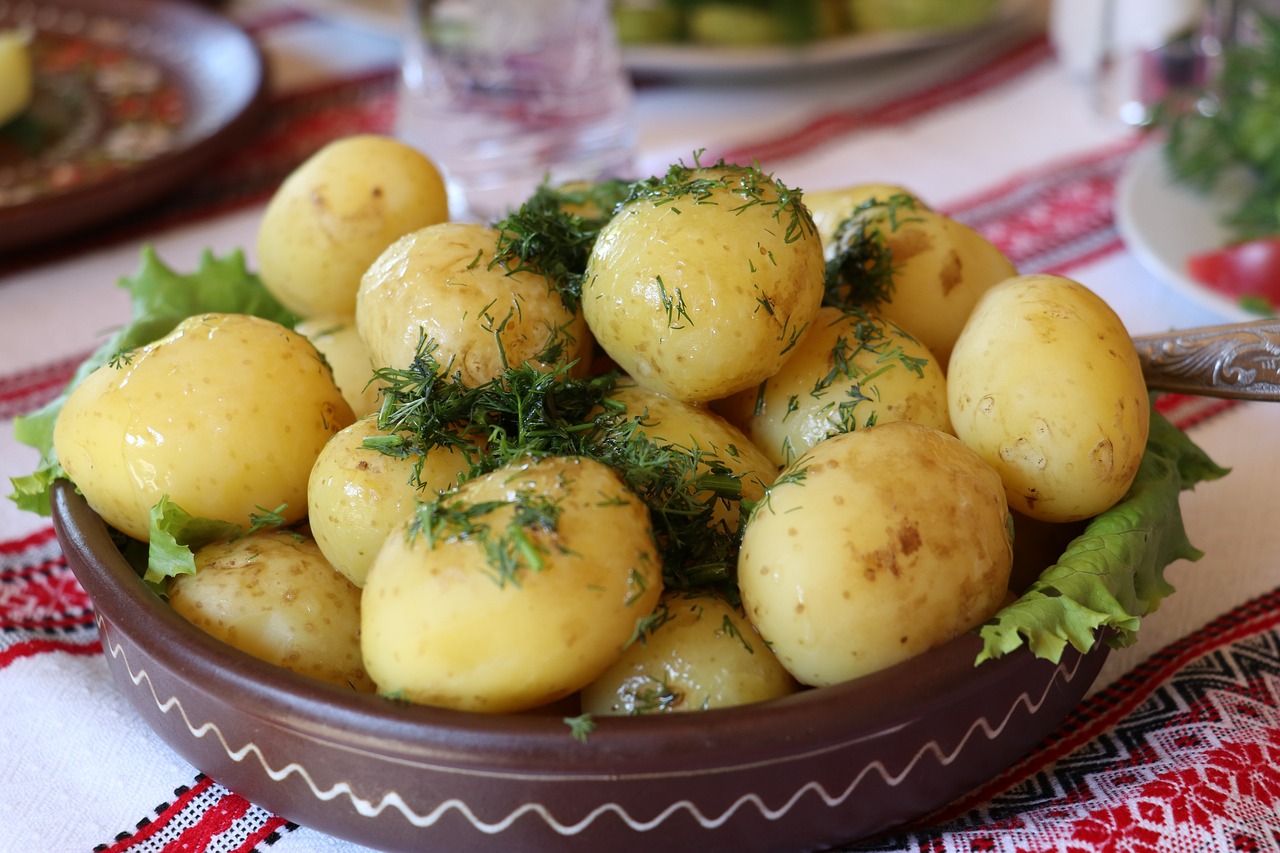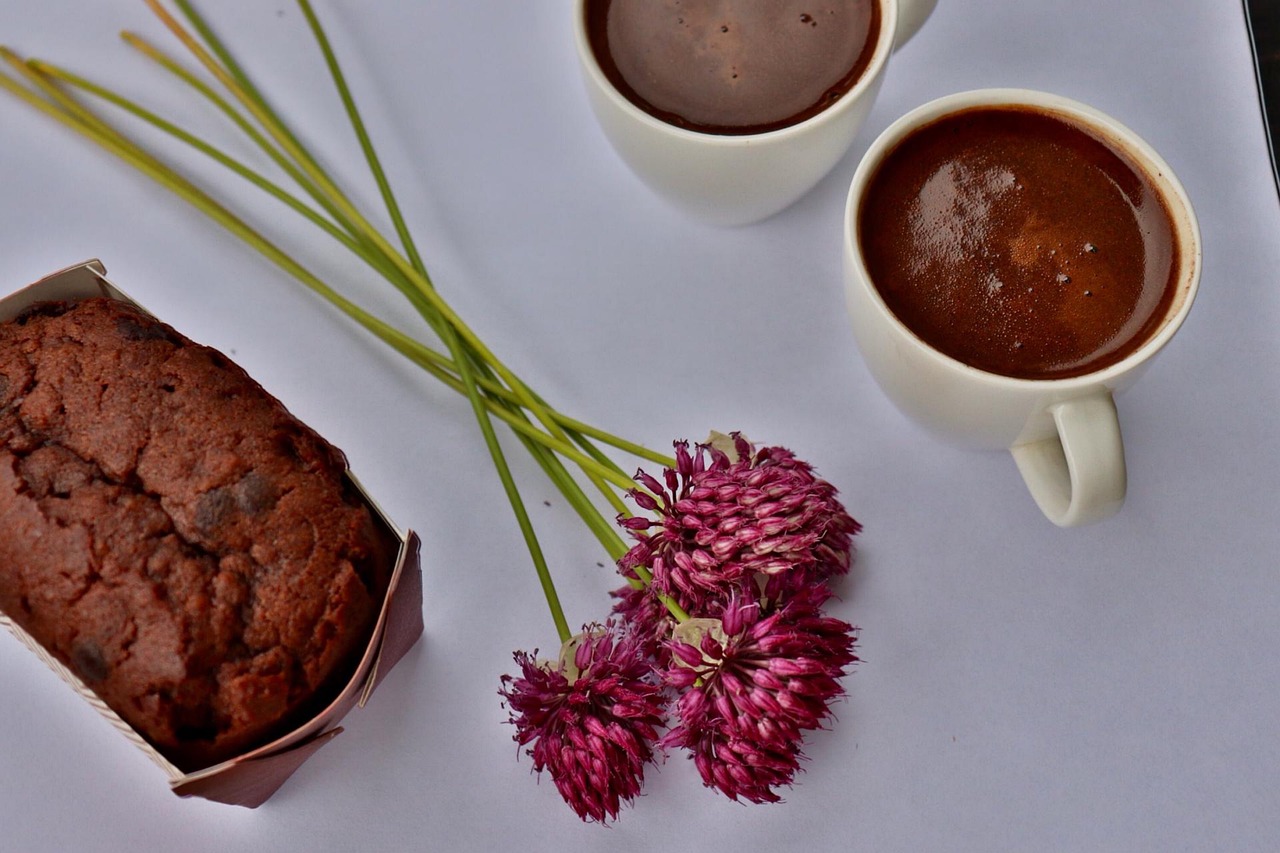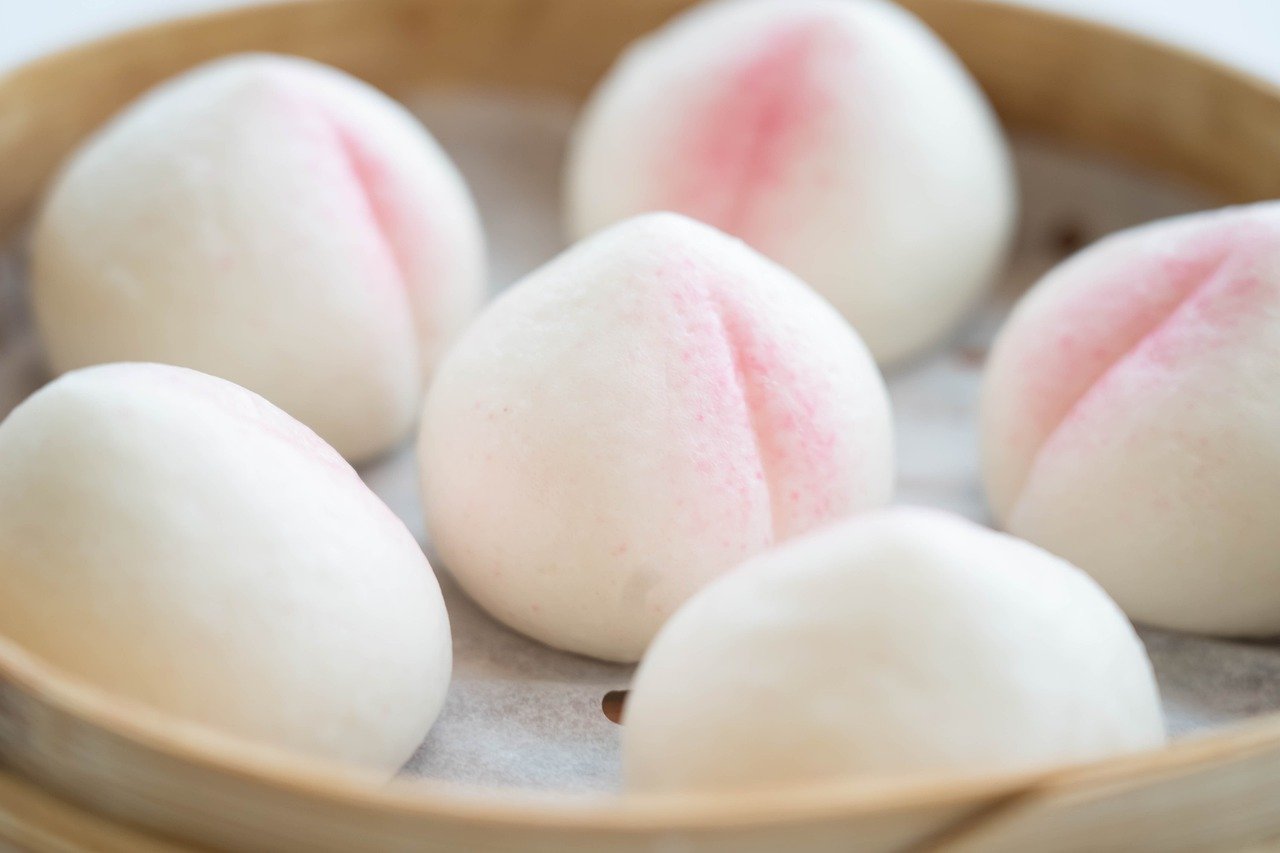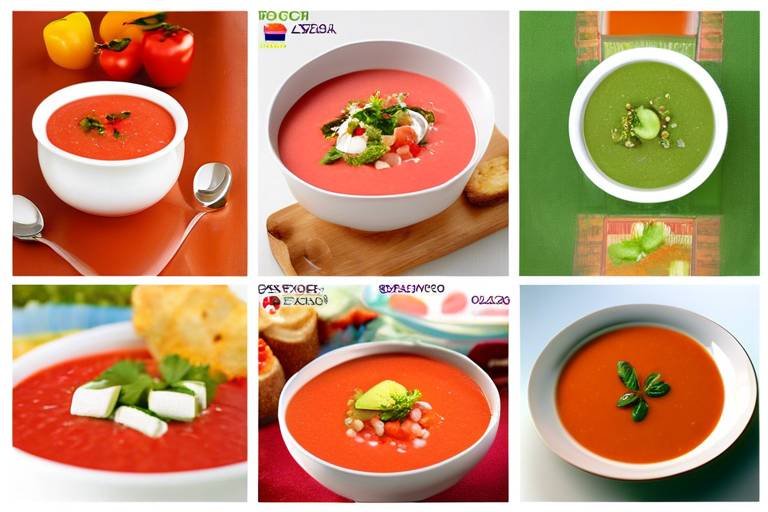A Guide to Authentic Turkish Meze Dishes
Have you ever experienced the explosion of flavors that Turkish meze dishes offer? These small plates are like surprise packages, packed with a variety of tastes that will tantalize your taste buds and leave you craving for more. Let's embark on a culinary journey through the world of authentic Turkish meze dishes, where each bite is a delightful adventure.

History of Turkish Meze
The history of Turkish meze is a fascinating journey that dates back centuries, reflecting the cultural tapestry of the region. Meze has its roots in ancient civilizations that once thrived in the lands of modern-day Turkey, where sharing small plates of food was a common practice. Over time, Turkish meze evolved, influenced by the culinary traditions of neighboring cultures and civilizations that left their mark on the region.
One of the key aspects of Turkish meze is its role as a social and communal dining experience. Meze is not just about the food itself but also about the act of sharing and enjoying these dishes with loved ones. In Turkish culture, meze is often served as a precursor to the main meal, allowing diners to sample an array of flavors and textures before moving on to the next course.
The tradition of meze in Turkey is deeply ingrained in the way people eat and socialize. It is a symbol of hospitality and generosity, where hosts go to great lengths to ensure their guests are well-fed and satisfied. Meze gatherings are lively affairs filled with laughter, conversation, and of course, delicious food.
Throughout history, Turkish meze has been influenced by various civilizations that have ruled the region, including the Greeks, Romans, Ottomans, and more. Each culture brought its own ingredients, flavors, and cooking techniques, contributing to the rich tapestry of Turkish meze dishes we know today.

Common Ingredients in Turkish Meze
When it comes to Turkish meze, the common ingredients used play a crucial role in creating the rich and diverse flavors that define these appetizing dishes. Fresh vegetables are a staple in Turkish cuisine, with tomatoes, cucumbers, and bell peppers often taking center stage. These vegetables are typically paired with creamy yogurt or tangy cheese to balance out the flavors. Olive oil, a cornerstone of Mediterranean cooking, is used generously in Turkish meze, adding a distinct richness and depth of flavor.
Herbs and spices are another essential component of Turkish meze, providing aromatic notes and enhancing the overall taste profile. Ingredients like mint, parsley, dill, and sumac are commonly used to infuse dishes with freshness and complexity. Additionally, garlic, cumin, and paprika are frequently incorporated to add warmth and depth to the flavors.
Dairy products, such as yogurt and feta cheese, are frequently featured in Turkish meze, offering a creamy and tangy contrast to the bold flavors of the other ingredients. These dairy products not only add a luscious texture to the dishes but also contribute to their overall richness and depth of flavor.
Furthermore, nuts and dried fruits are often used to add a crunchy texture and a hint of sweetness to certain Turkish meze dishes. Walnuts, almonds, and pistachios are commonly sprinkled over salads or mixed into dips, providing a delightful contrast in both taste and texture. Dried fruits like apricots and figs are also used to add a touch of natural sweetness to savory dishes.

Regional Varieties of Turkish Meze
When it comes to Turkish cuisine, the regional varieties of meze play a significant role in showcasing the diversity and richness of flavors across different parts of the country. Each region offers its unique twist on these small plates, reflecting local ingredients, culinary traditions, and cultural influences.
Along the Aegean coast, you can expect to find meze dishes that highlight the abundance of fresh seafood, citrus fruits, and olive oil. From savory octopus salads to zesty shrimp stew, Aegean meze is a celebration of the sea's bounty, paired with refreshing flavors that awaken the palate.
Heading towards the Black Sea region, meze takes on a heartier and more robust character, influenced by the lush greenery and fertile lands of the area. Dishes like cornbread with local cheeses, bean salads with pomegranate molasses, and smoked fish spreads showcase the earthy and rustic flavors that define Black Sea meze.
Central Anatolia offers a blend of traditional meze with a modern twist, incorporating ingredients like lamb, yogurt, and grains into innovative dishes. Meze such as bulgur wheat patties with herbs, grilled eggplant yogurt dip, and spicy minced meatballs reflect the culinary creativity and resourcefulness of the region.
When exploring the southeastern part of Turkey, you will encounter meze dishes that are bold, spicy, and aromatic, reflecting the influence of Middle Eastern and Mediterranean cuisines. From stuffed grape leaves with aromatic rice to spicy red pepper paste dips, southeastern meze is a fiery and flavorful journey for the taste buds.
Lastly, the Marmara region, home to Istanbul, offers a fusion of meze styles from various regions, creating a melting pot of flavors and textures. Meze like mussels stuffed with aromatic rice, lamb kebabs with yogurt sauce, and eggplant puree with garlic showcase the diverse culinary influences that converge in this vibrant city.

Popular Turkish Meze Recipes
When it comes to popular Turkish meze recipes, there is a delightful array of flavors and textures to explore. One beloved dish is cacik, a refreshing yogurt-based dip infused with garlic, cucumbers, and mint. Its creamy consistency and tangy taste make it a perfect accompaniment to grilled meats or as a dip for bread.
Another classic Turkish meze recipe is hummus, a creamy blend of chickpeas, tahini, lemon juice, and garlic. This versatile dip is a staple in Turkish cuisine, offering a smooth and nutty flavor that pairs well with fresh vegetables or warm pita bread.
Dolma is a popular meze dish consisting of grape leaves stuffed with a flavorful mixture of rice, pine nuts, herbs, and spices. The combination of savory and tangy flavors creates a satisfying bite-sized treat that is both delicious and visually appealing.
For those who enjoy a crispy and savory snack, sigara borek is a must-try Turkish meze recipe. These cigar-shaped pastries are filled with a savory mixture of cheese, parsley, and spices, then fried to a golden perfection. They are perfect for sharing and are sure to impress your guests.
Each of these popular Turkish meze recipes offers a unique taste experience that reflects the rich culinary heritage of Turkey. Whether you are hosting a gathering or simply craving a flavorful appetizer, these dishes are sure to satisfy your taste buds and transport you to the vibrant streets of Istanbul.

Serving and Enjoying Turkish Meze
When it comes to serving and enjoying Turkish meze, it's not just about the food—it's a whole experience. Picture a vibrant table filled with an array of colorful dishes, each offering a unique burst of flavors and textures. The tradition of meze goes beyond just eating; it's about sharing and connecting with others over a communal meal.
Typically, Turkish meze is served as a series of small plates, allowing diners to sample a variety of dishes in one sitting. This style of dining encourages conversation and a leisurely pace, perfect for savoring each bite and enjoying the company of friends and family.
One of the key aspects of serving Turkish meze is the art of presentation. Dishes are often arranged in an aesthetically pleasing manner, showcasing the colors and textures of the ingredients. This visual appeal adds to the overall dining experience, making it not just a meal but a feast for the eyes as well.
When it comes to enjoying Turkish meze, the etiquette is simple yet significant. Sharing is a common practice, with diners passing plates around the table and trying a bit of everything. This communal style of dining fosters a sense of togetherness and creates a warm, welcoming atmosphere.
Pairing Turkish meze with the right beverages is also essential for enhancing the flavors of the dishes. Whether it's a glass of refreshing raki, a crisp white wine, or a soothing cup of tea, the choice of drink can elevate the dining experience and complement the various flavors of the meze.
Overall, serving and enjoying Turkish meze is not just about the food on the table—it's about the connections made, the stories shared, and the memories created. It's a celebration of food, culture, and community, all coming together in a symphony of flavors and experiences.

Health Benefits of Turkish Meze
When it comes to Turkish meze dishes, the benefits extend beyond just their delicious taste. These small plates are not only flavorful but also offer a range of health benefits that can contribute to a balanced diet and overall well-being. Let's dive into the nutritional advantages of indulging in authentic Turkish meze.
One of the key health benefits of Turkish meze dishes lies in their ingredients. Fresh vegetables like tomatoes, cucumbers, and peppers are commonly used, providing a rich source of vitamins, minerals, and antioxidants. These vegetables are often consumed raw or lightly cooked, preserving their nutritional value and offering a refreshing and healthy option for appetizers.
Another essential component of Turkish meze is olive oil, a staple in Mediterranean cuisine known for its heart-healthy properties. Olive oil is high in monounsaturated fats, which can help reduce the risk of heart disease and inflammation. By incorporating olive oil into meze recipes, you not only enhance the flavor but also boost the nutritional profile of the dishes.
Herbs and spices play a significant role in Turkish meze, adding depth of flavor and potential health benefits. Ingredients like mint, parsley, and sumac not only enhance the taste of the dishes but also offer medicinal properties. These herbs are rich in antioxidants and have anti-inflammatory effects, promoting overall health and well-being.
Furthermore, Turkish meze often include dairy products such as yogurt and feta cheese, which are excellent sources of protein and calcium. These dairy ingredients contribute to the satiety of the dishes while providing essential nutrients for bone health and muscle function. Incorporating dairy into meze dishes adds a creamy texture and a nutritional boost.
In addition to the individual benefits of the ingredients, Turkish meze dishes are typically served in small portions, encouraging moderation and mindful eating. This approach allows diners to sample a variety of flavors without overindulging, promoting a balanced and controlled consumption of food.
Overall, indulging in Turkish meze can be a flavorful and health-conscious choice. With a focus on fresh ingredients, heart-healthy olive oil, nutrient-rich herbs and spices, and portion control, these appetizing dishes offer a combination of taste and nutrition that can contribute to a wholesome diet.

Pairing Turkish Meze with Beverages
Pairing Turkish meze with beverages is an art that enhances the dining experience, creating a harmonious balance of flavors on the palate. The diverse range of meze dishes offers a plethora of options for pairing with various beverages, each complementing the other in unique ways. Whether you prefer the anise-flavored raki, the fruity notes of Turkish wine, the refreshing taste of ayran, or the comforting warmth of tea, there is a perfect match for every meze dish.
One popular choice for pairing with Turkish meze is raki, a traditional alcoholic drink that is often referred to as the "lion's milk." Its distinct anise flavor and strong aroma make it an ideal companion for rich and flavorful meze dishes. The licorice notes of raki can cut through the richness of dishes like cacik and add a refreshing contrast to the palate.
For those who prefer non-alcoholic options, ayran is a traditional Turkish yogurt drink that pairs beautifully with meze. Its tangy and creamy texture can balance the bold flavors of dishes like hummus and dolma, providing a cooling effect that complements the spices and herbs used in the meze.
If you're a wine enthusiast, exploring the world of Turkish wine can open up a whole new dimension of pairing possibilities. From crisp whites to full-bodied reds, Turkish wines offer a diverse range of flavors that can elevate the taste of meze dishes, enhancing the overall dining experience.
Lastly, tea holds a special place in Turkish culture and is often enjoyed with meze, especially during leisurely gatherings. The subtle bitterness of tea can cleanse the palate between bites of flavorful meze, allowing you to fully appreciate the nuances of each dish.
Experimenting with different beverages and meze combinations can lead to delightful discoveries, unlocking new flavor profiles and enhancing your culinary journey through the vibrant world of Turkish cuisine.

Making Turkish Meze at Home
When it comes to making Turkish meze at home, it's all about embracing the vibrant flavors and textures that define this beloved cuisine. To start your meze-making adventure, gather high-quality ingredients that capture the essence of Turkish cooking. Fresh vegetables like tomatoes, cucumbers, and bell peppers are essential for creating colorful and refreshing dishes.
One popular meze dish that you can easily prepare at home is cacik, a yogurt-based dip infused with garlic and cucumber. To make cacik, simply combine thick yogurt with grated cucumber, minced garlic, olive oil, and a hint of mint. The result is a creamy and tangy dip that pairs perfectly with warm bread or grilled meats.
For a more indulgent meze option, try your hand at making sigara borek, crispy pastry rolls filled with savory ingredients like feta cheese and parsley. To assemble sigara borek, wrap the filling in thin phyllo dough strips and fry until golden and crispy. These bite-sized treats are sure to impress your guests and add a touch of elegance to your meze spread.
When preparing Turkish meze at home, don't forget to experiment with different herbs and spices to elevate the flavors of your dishes. Fresh mint, parsley, dill, and sumac are commonly used in Turkish cuisine to add depth and complexity to meze recipes. Additionally, drizzling olive oil and sprinkling sumac over your meze creations can enhance their visual appeal and taste.
Frequently Asked Questions
- What is Turkish Meze?
Turkish Meze refers to a selection of small dishes served as appetizers or snacks in Turkish cuisine. These dishes are characterized by their rich flavors, diverse ingredients, and cultural significance.
- What are some common ingredients used in Turkish Meze?
Common ingredients in Turkish Meze include fresh vegetables like tomatoes and cucumbers, olive oil, herbs such as parsley and mint, spices like cumin and paprika, and dairy products like yogurt and cheese.
- How are Turkish Meze dishes traditionally served and enjoyed?
Turkish Meze dishes are typically served as a spread of small plates, allowing diners to sample a variety of flavors. They are often enjoyed in a social setting, with friends and family sharing the dishes and engaging in lively conversation.
- What are some popular Turkish Meze recipes?
Popular Turkish Meze recipes include cacik (yogurt and cucumber dip), hummus (chickpea dip), dolma (stuffed grape leaves), and sigara borek (cheese-filled pastries). These dishes showcase the diverse flavors of Turkish cuisine.
- Are Turkish Meze dishes healthy?
Yes, Turkish Meze dishes are often healthy as they incorporate nutritious ingredients like olive oil, vegetables, and herbs. They offer a balance of flavors and nutrients, making them a wholesome choice for a meal or snack.



















